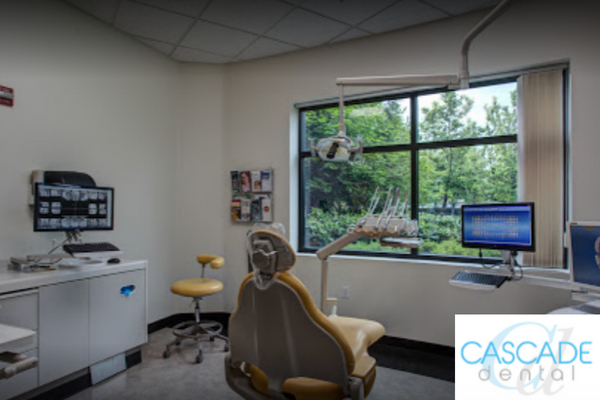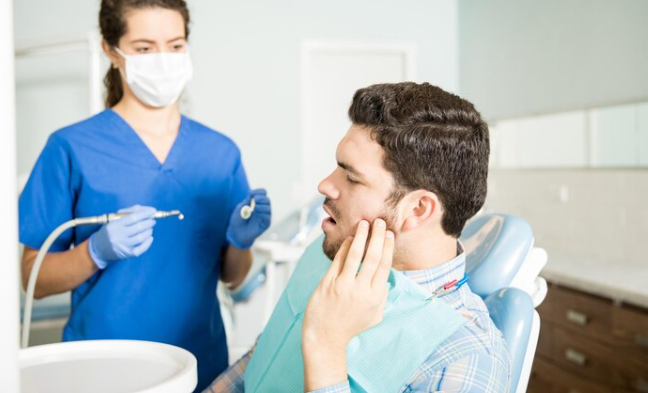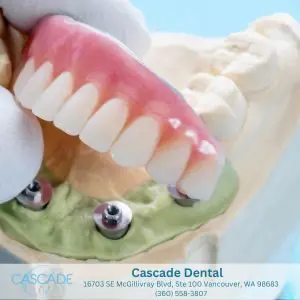The field of dentistry has witnessed significant transformations in recent years, thanks to the rapid advancements in dental technology. These modern tools not only make dental procedures more effective but also elevate the overall patient experience, focusing on comfort, accuracy, and efficiency.
With innovations ranging from laser treatments to digital imaging, dental professionals can now offer more precise care, ensuring that every visit to the dentist is a positive experience. Let’s explore how these advancements are shaping the future of dentistry and what patients can expect from a modern dental visit.
What Are The Latest Advancements In Dental Technology For Patient Comfort?
Have you noticed how dental visits are becoming more comfortable these days? That’s because new technologies are making a big difference in patient comfort. Let’s look at some of the latest advancements:
- Laser Dentistry: Lasers are now used for procedures like cavity removal and gum treatments. They reduce pain, minimize bleeding, and often eliminate the need for stitches, leading to faster healing.
- Digital Impressions: Say goodbye to messy molds! Digital scanners create accurate 3D images of your teeth, making the process quicker and more comfortable. This results in better-fitting crowns and aligners.
- Sedation Options: Modern sedation dentistry offers various levels of sedation to help anxious patients relax during treatments. From mild relaxation to deep sleep, there’s an option to suit your comfort level.
- 3D Printing and CAD/CAM: Custom crowns and bridges can be made in-office during a single visit, reducing the need for temporary fixes and multiple appointments. This technology ensures a precise fit.
- Intraoral Cameras: These tiny cameras let you see what the dentist sees, helping you understand your oral health while making examinations less invasive. It enhances communication between you and your dentist.
- Virtual Reality (VR): Some dental offices use VR headsets to distract patients during procedures, reducing anxiety and making the time pass quickly. Imagine relaxing on a beach while your teeth are cared for!
- Noise-Cancelling Technology: To combat the unnerving sound of dental drills, some practices offer noise-cancelling headphones or use quieter electric handpieces. This creates a calmer environment.
- Digital X-Rays: Faster and with less radiation exposure than traditional X-rays, they provide immediate images for quicker diagnosis and treatment planning.
These innovations aim to make your dental experience as pleasant as possible. So next time you’re due for a check-up, rest assured that modern technology is working to keep you comfortable and at ease. With all these advancements, maintaining your oral health has never been easier or more stress-free.
How Are Modern Dental Tools Improving Treatment Accuracy?
Accuracy in dental treatments is paramount, and thanks to technological advancements, dentists are now more capable of delivering precise results. One of the most notable innovations is the use of computer-aided design and computer-aided manufacturing (CAD/CAM) technology.
This system allows dentists to design and create restorations, such as crowns or veneers, on-site with exceptional accuracy. Instead of relying on external labs, dentists can scan a patient’s tooth, design the restoration digitally, and produce it right in the office. This not only improves the precision of the treatment but also reduces wait times, allowing for same-day procedures in many cases.
Other tools, such as intraoral scanners, have replaced traditional impression materials that some patients find uncomfortable. These digital scanners capture highly detailed images of the mouth, helping dentists create more accurate models for restorative work. The improved accuracy results in better-fitting crowns, bridges, and aligners, which in turn enhance the overall outcome of dental treatments.
Moreover, modern endodontic tools, such as rotary instruments for root canals, have made previously complex procedures more efficient and precise, reducing the risk of errors and improving the overall success rate of treatments.
What Role Does Digital Imaging Play In Enhancing Dental Procedures?
Digital imaging has revolutionized the way dentists diagnose and plan treatments. Traditional X-rays have long been the standard, but digital radiography takes diagnostic imaging to a new level. Digital X-rays offer sharper, more detailed images and emit significantly less radiation, making the process safer for patients. These images can be viewed almost instantly, allowing dentists to detect issues like cavities, bone loss, or infections with greater accuracy.
Three-dimensional (3D) imaging technology, such as cone-beam computed tomography (CBCT), is also transforming dental procedures. This advanced imaging technique provides a 3D view of the patient’s teeth, jaws, and surrounding structures, which is particularly valuable for complex treatments like dental implants or orthodontics. By having a comprehensive view of the mouth’s anatomy, dentists can plan procedures with enhanced precision, minimizing complications and improving outcomes.
In addition to diagnostic purposes, digital imaging is also being used to create digital smile designs. Patients can see a preview of how their smile will look after treatment, whether it’s through orthodontics, veneers, or other cosmetic procedures. This level of visualization helps patients feel more confident about their treatment plan and ensures their expectations align with the final results.
How Is Laser Technology Used In Current Dental Treatments?
Have you ever wondered how lasers are changing the face of dental care? Laser technology is making dental treatments more comfortable and efficient than ever before. Here’s how lasers are being used in today’s dental procedures:
- Cavity Detection and Removal: Lasers can detect early signs of tooth decay and precisely remove cavities without the need for drills.
- Gum Disease Treatment: Laser therapy helps remove infected gum tissue and bacteria, promoting healing and reducing discomfort.
- Teeth Whitening: Lasers accelerate the whitening process by activating bleaching agents, giving you a brighter smile in less time.
- Lesion and Ulcer Removal: Lasers can painlessly remove oral lesions or ulcers, providing quick relief.
- Root Canal Procedures: Lasers assist in cleaning and disinfecting root canals more effectively than traditional methods.
- Biopsies: Dentists use lasers to remove small amounts of tissue for testing, often with less bleeding and quicker healing.
- Tooth Sensitivity Treatment: Lasers can seal tubules on tooth roots, reducing sensitivity to hot and cold temperatures.
- Reshaping Gum Tissue: For cosmetic purposes or to aid in crown placement, lasers precisely reshape gum lines without the need for scalpels.
The benefits of using lasers in dentistry include:
- Minimized Pain and Discomfort: Procedures are often less invasive, reducing the need for anaesthesia.
- Faster Healing Times: Lasers reduce bleeding and swelling, promoting quicker recovery.
- Increased Precision: They allow dentists to target specific areas without affecting surrounding healthy tissue.
- Reduced Anxiety: The quiet operation of lasers can make dental visits more pleasant for those anxious about drills.
So, the next time you’re heading to the dentist, you might just experience these laser advancements firsthand. It’s exciting to see how technology is making dental care more patient-friendly and efficient!
Transform Your Smile with Cascade Dental Today!
Ready to experience the future of dental care? Don’t settle for outdated treatments when you can benefit from the latest innovations. At Cascade Dental, we’re not just about fixing teeth—we’re about creating stunning, healthy smiles that last. Whether you’re looking for precision treatments or a comfortable, anxiety-free visit, our advanced technology and personalized care have you covered.
Book your appointment now and let us show you how dental care should really feel. Your best smile is just one click away!




